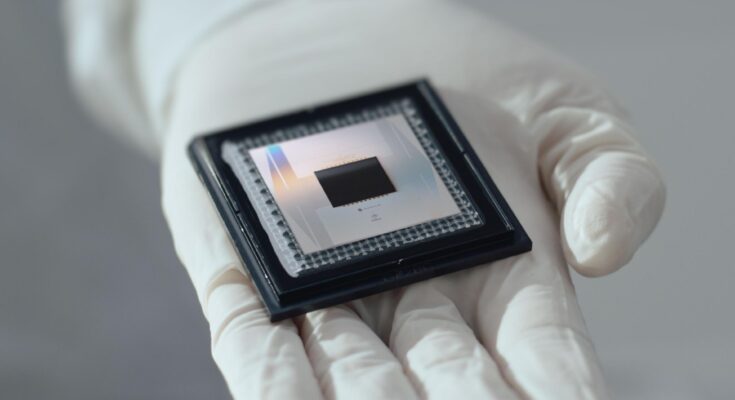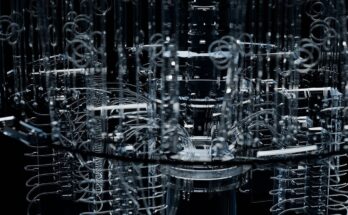Google’s Willow quantum chip, released in December 2024, showcases fast processing capabilities and error handling, presenting a new generation of quantum computing solutions beyond classical computers.
The Google quantum computing processor Willow’s general capabilities, performance metrics, and ramifications for the multiverse theory will all be covered in the sections that follow.
Willow Quantum Chip: What Is It?
Willow, a state-of-the-art quantum chip, achieved below-threshold performance, reducing errors and scaling qubits during processing. Willow, according to Google, shows real-time error correction on a quantum superconducting device.
The Willow Quantum Chip: Why Is It Important?
The Willow quantum chip is able to resolve processing problems that cause the calculation to halt. This makes it possible to execute increasingly intricate calculations without errors, which has previously proven to be a challenge for numerous quantum researchers.
Willow’s Fundamental Skills
Willow provides several features, such as:
Decreased Errors
According to Google, Willow can lower errors as processing volume grows. In actuality, Willow reduces errors more when it employs more qubits.
Fast Speed
Willow can digest information quickly as well. In reality, it can do a typical benchmark calculation in five minutes that would take the Frontier supercomputer ten septillion years.
Solving Issues
The Google Willow quantum chip’s enhanced processing capacity also makes it possible to solve issues that traditional computers just cannot handle due to their limited bandwidth.
Crypto Risk: Is Willow Able to Crack Bitcoin?
Quantum advancements raise questions about their impact on blockchain-driven technology like Bitcoin. Willow Chip can perform complex calculations quickly, but it lacks the power to decrypt Bitcoin yet.
Bernstein analysts noted that Willow’s 105 qubits are insufficient to attack Bitcoin encryption mechanisms like ECDSA and SHA-256. However, if quantum computers become advanced enough, they could decrypt Bitcoin’s encryption, leaving wallet holders vulnerable to cybercrime theft.
Although it doesn’t seem likely to happen anytime soon, Gartner predicts that by 2029, developments in quantum computing would render the asymmetric cryptography used by Bitcoin and other similar technologies dangerous, and by 2034, it will be completely breakable.
Discussion on Willow Quantum Chips and the Multiverse
The Relationship Between Multiverse Theory and Quantum Computing
According to a theory about quantum computing put forth by scientist David Deutsch in The Fabric of Reality, quantum computation may occur across parallel worlds, and our realm coexists with other parallel dimensions.
The question of whether the Willow quantum chip’s capacity to do calculations at such a high speed validates the multiverse theory has sparked a multiverse discussion.
Does Willow Support the Multiverse Theory?
Willow’s role in proving the existence of the multiverse is evident in its ability to solve a problem that would have taken a classical supercomputer 10 septillion years to perform in just five minutes. This number, which is beyond known timescales in physics and the universe’s age, supports the idea that quantum computation occurs in parallel universes.
Neven’s statement about quantum mechanical Hilbert space and parallel universes has been criticized by Ethan Siegel, who claims he has conflated the two concepts. Siegel argues that a successful quantum computer would not prove the existence of a multiverse or parallel universes, and that a computer made by humans would also be unlikely to prove these concepts.
What’s Up Next for the Google Chip Willow Quantum Computing?
Google revealed that proving a “useful, beyond-classical” computation on contemporary chips that can be applied in practical applications will be the next hurdle for quantum computing, even though the future of Willow, the new quantum chip, is still unknown.
Google aims to combine the RCS benchmark for measuring performance against classical computers with quantum system simulations to make new discoveries. The goal is to step into the realm of algorithms beyond classical computers that are useful for real-world, commercially relevant problems.
The Bottom Line
Willow is an example of a new generation of quantum chips that will soon be used to create practical applications. Although most of the conversation surrounding quantum computing has been theoretical thus far, these chips will contribute to the development of more useful substitutes for traditional computers.
This will be crucial for increasing the processing power of contemporary computers as well as providing them with the bandwidth they need to run increasingly potent AI models in the future.


